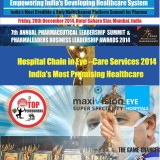One of the great joys of our Infinite Dial series is we can track items from so far back. This year we brought back some questions about media in general that we had asked in the past. We showed some of that data in our initial public presentation.
The Infinite Dial 2015, the latest in a long-running series of studies on consumer adoption of digital media, was released today (see below for download information). This new national survey from Edison Research and Triton Digital found that 53 percent of Americans age 12 and older listen to online radio monthly and 44 percent, or 119 million people, listen on a weekly basis.
The study, released today, is the 23rd in a series dating back to 1998 that use the “gold standard” of survey research – a random probability telephone sample representative of all Americans ages 12 and older.
Among the many other findings:
- More than seven in ten (71 percent) now own a smartphone, an increase of ten percentage points from the 2014 report.
- Pandora is the leading Internet-only audio service. More than half (54 percent) of Internet audio users say that Pandora is the service they listen to most often followed by iHeartRadio (11 percent), Spotify (10 percent), and iTunes Radio (8 percent).
- Facebook is the most used Social Media site with nearly two-thirds (65 percent) of those who use any Social Media saying Facebook is the service they use most often. Among 12 to 24 year-olds, Facebook (43 percent) is the most used, beating Instagram (18 percent), Snapchat (15 percent), and Twitter (8 percent).
- Podcasting is on the rise, as monthly audio podcast consumption grew from approximately 39 million monthly users in 2014 to approximately 46 million in 2015.
- The majority of Americans (57 percent) say that technological change over the last ten years has had a positive impact on society; while only 15 percent say that it has had a negative impact.
- Nearly two-thirds (63 percent) of all users and nine-in-ten 12 to 24 year-olds have used YouTube to watch music videos or listen to music.
“Media consumption habits have changed dramatically in the past five years,” noted Tom Webster, Vice President of Strategy and Marketing, Edison Research. “Online Radio has become mainstream, Podcasts are enjoyed by a significant portion of the population, and even the social media platforms that dominated five years ago have shifted. It’s vital for marketers and advertisers to understand and plan for these shifts.”
“Perhaps the most significant finding from this year’s report is the change in frequency of use for streaming audio,” said John Rosso, President, Market Development, Triton Digital. “For years Americans have been occasional listeners but for the first time it’s apparent that streaming audio has become an ingrained part of our lives as the number of Americans listening weekly is now 44 percent. This is a huge opportunity for publishers and marketers to better identify and target
Here’s one we didn’t show: We asked “Among the Internet, newspapers, radio and television which one is the least essential to your life?”
Below are the results from the first time we asked in 2002, and from this year’s study:

Thirteen years ago, still one-third of Americans ages 12 and over (who now of course would be 25 and older) said the Internet was the least essential to their lives. Of course, at that time only 57% of households had Internet access in their homes (compared to 85% today).
The obvious point is the dwindling influence of ‘The Newspaper’ on people’s lives, as nearly half our sample says it is their ‘least essential’ of the four. But as we know, so much of what the Newspaper provided (and provides still) has been subsumed by the Internet. It’s impossible to know how much the very content that newspaper companies provide to the Internet contributes to the ‘essential-ness’ of the Internet. Of course when a guy named Craig decided to start a List, and give it away for free, he helped set print into what’s likely an unrecoverable spiral.
Equally interesting to me is the near three-way tie for the ‘least-least’ essential medium among the four. The Internet now has the fewest people saying it is least essential — but it’s about tied with Radio and Television, with less than one-in-five choosing any of these. Which is just another way of showing that while the Internet has surely ‘changed everything’, it’s print that has been hit by far the hardest.



























Recent Comments